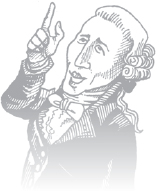

The career of a professional musician in the late eighteenth century took on a new form, as many made money through teaching, public performance, and commissions for new compositions, in addition to the tried and true patronage of royalty, churches, and municipalities. Composers also faced a new challenge: in addition to pleasing their patrons, demand for entertaining music for the public increased greatly, influencing composers in an attempt to satisfy both constituencies.
The masters of achieving broad popular appeal were Joseph Haydn (1732-1809) and Wolfgang Amadeus Mozart (1756-1791), and their music has come to serve as the quintessence of the Classical period. Aside from their exceptional careers and compositions, both composers demonstrated a unique ability to appeal to audiences in a lasting and meaningful way through their synthesis of styles and traditions. Haydn built his acclaim by working under the patronage of the Prince of Esterházy, while Mozart gained fame immediately as a child prodigy, touring Europe as a performer and composing before he reached double digits in age.
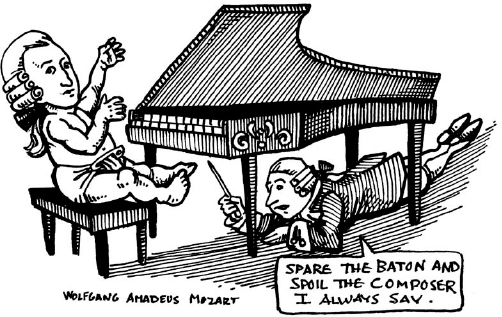
Most of Haydn's career was spent in service to the Esterházy family, the most powerful noble family in Hungary known for their generosity and patronage of music. Haydn's job: to compose whatever music the prince demanded. He also conducted performances, maintained the repair of musical instruments, and oversaw the training and supervision of all of the estate's musicians. Although the Esterházy court was geographically isolated, it proved an ideal environment for the developing composer, where he composed a range of music from orchestral works to operas to masses. Although Haydn's contract specifically prohibited the selling or dissemination of any of his compositions, black market copies of his works eventually found their way across Europe, thus spreading his fame and reputation across the continent. In 1790, Haydn was eventually given a pension and released from his court position; he moved to Vienna, but took two extended trips to London, where he conducted concerts, taught students from noble families, and composed a number of new works.
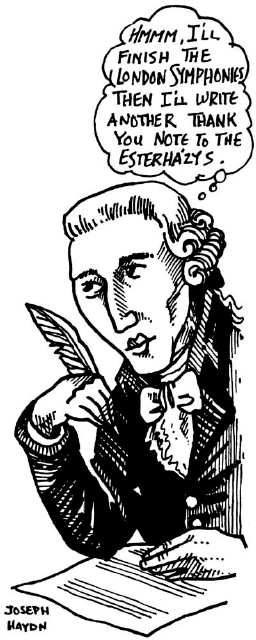
Haydn has been referred to as the “father of the symphony” because of his symphonies' broad appeal, high quality, and wide dissemination (not because he invented the genre, which we have already learned he didn't!). Haydn's symphonies were staples of the classical repertory of the nineteenth century; a concert wouldn't be complete without one. Haydn's symphonies are marked by a four-movement structure: a fast movement in sonata form; a slow movement; a minuet and trio (dance movements commonly paired together); and a fast finale. While visiting London, he composed his now exalted London Symphonies, twelve symphonic works that are the crowning achievement of his compositional career. In these symphonies, Haydn took his own compositions to new heights, with daring harmonies, memorable melodies, and intense rhythms.
Haydn also has been called the “father of the string quartet,” perhaps for better reason than the “father of the symphony.” Although he was not the first composer to conceive of the genre, he certainly was one of the earliest composers and set a high bar for the mastery of the composition. Unlike the symphony, which was usually performed by professional musicians in a public venue, the string quartet was usually played by amateur musicians for their own enjoyment (let us be clear: “amateur” does not mean lacking skill). As such, Haydn's string quartets seem to be composed directly for the players and not an audience; the works often feature an interplay or dialogue among the four string instruments. One of his quartets earned the moniker The Joke, because of Haydn's witty, almost comical approach to its composition. In one of the movements, he inserts long, uncomfortable pauses that interrupt the “thought” of the theme. These unexpected pauses are funny because they make both players and listeners aware of their own expectations for the music.
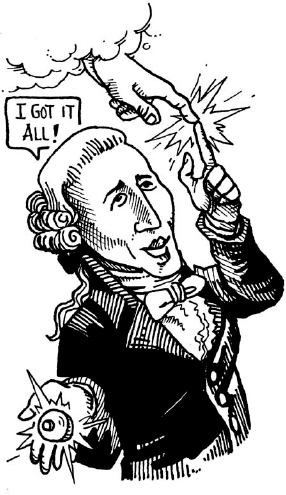
Haydn enjoyed success not only in the composition of instrumental works, but also in his creation of vocal compositions. He composed a number of large-scale, festive masses while serving the Esterházy family, and his last six masses exemplify the height of drama, each featuring four solo vocalists, chorus, and full orchestra with trumpets and timpani. Haydn blended traditional elements like fugal writing with drama and, of course, the galant style. Inspired by a performance of Handel's Messiah, Haydn burst into tears and proclaimed of Handel, “He is the master of us all.” This inspiration led to the composition of his The Creation, based on texts adapted from the Book of Genesis and Milton's Paradise Lost. The work is revolutionary in a number of ways: Haydn takes text depiction to new depths (such as the contrabassoon depicting the roaring lion); he builds on Handel's use of chorus, where the choir is the heavenly host proclaiming God's glory at the end of each; and he publishes the oratorio in both German and English, the first bilingual libretto in history.
Haydn was intimately familiar with the music of Mozart; they admired each other and considered each other a friend; however, they led drastically different lives. Haydn was content spending several decades in the service of a single family, while Mozart spent the majority of his short life as a freelance musician in Vienna. Haydn's fame and reputation grew over the course of his life, while Mozart's career began when he was but a young child, perhaps fortuitously in light of his early death. Despite these inherent differences, the two composers eventually came to represent the quintessence of the music of their time.
Mozart was born into a musical family: his father Leopold was an accomplished violinist and composer, and he exposed his children to a wide range of musical genres and styles at a very young age. At the young age of six, Mozart was already touring Europe with his family. Mozart's career would look much like the musical tours of his youth, taking him to Milan, Salzburg, and Vienna. He earned money from various posts under the patronage of an aristocrat or institution and by freelancing as a performer, teacher, and composer.
As a virtuoso pianist, it is no wonder that he composed a wealth of repertoire for the piano, including sonatas, fantasias, variations, and piano duets (for two players at one piano). His nineteen piano sonatas have become staples of pedagogical repertoire, and they were exceedingly popular at the time as well. His sonatas are marked by songlike melodies in the right hand accompanied by a simple harmonic figure in the left hand, as well as his blending of various styles and emotions. Mozart also composed a number of string quartets, although not nearly as prolifically as Haydn did. In fact, Mozart emulated Haydn's compositional prowess in the genre in his six Haydn Quartets, although he did so in his own musical language and style.
Like Haydn, Mozart composed many symphonies (more than fifty), but by far his greatest success was in the composition of opera. Mozart operas have become regular features in opera houses around the world. The Marriage of Figaro, Don Giovanni, and Così fan tutte (Thus Do All Women) were and still are immensely successful as comic opera, as are his serious operas La clemenza di Tito (The Mercy of Titus) and The Magic Flute. The Magic Flute is especially important in the history of opera: composed in German (its German title is Die Zau berflöte), the rich and profound music of the opera ranks it as the first great German opera.
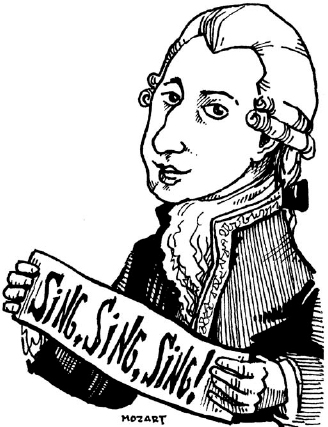
The Magic Flute was one of Mozart's last completed compositions before his untimely death, preventing him from completing his renowned Requiem. His unfinished Requiem has long been shrouded in mystery and legend. While there remain many unanswered questions about the Requiem, there is much that we do know about the work that has transcended time and permeated popular culture. For example, when Mozart accepted the anonymous commission, he hardly could have foreseen his own untimely death, as he had several other major compositions in the works. We also know that his wife Constanze contracted several other composers (Franz Jakob Freystädtler, Josef Eybler, and ultimately Franz Süssmayr) to finish the work so she could collect the rest of the commission fee. Based on the extant autograph score and notes of the Requiem, we know what music is purely Mozart and what has been either completed or newly composed by others.
At the time of his death, Mozart had completed the Introit in its entirety (including complete music for the orchestra) and with the exception of the Lacrimosa, of which only eight mea sures were written, he fully composed the four vocal parts and bass line from the Kyrie through the end of the Offertory. Using fragments of musical material, Süssmayr completed the orchestra parts for the Kyrie, Sequence, and Offertory, and he composed entirely new music for the Sanctus, Benedictus, and Agnus Dei. Süssmayr also completed the work (the Communion) with a return of the music from the first two movements, which he believed was Mozart's intention.
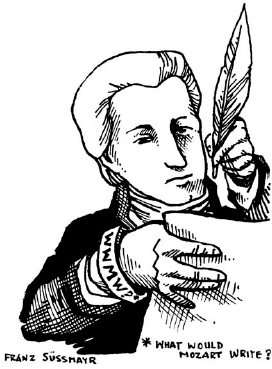
Since the end of the eighteenth century, Haydn and Mozart have been hailed as the greatest of the classical composers. Although they followed very different career paths, each found great success as composers and performers, and their compositions endured for centuries after their deaths. Their works provided models upon which Beethoven and composers of the nineteenth century would base their own compositions, and their music would ultimately become known as “classical,” forming the core of the Western art music repertory.